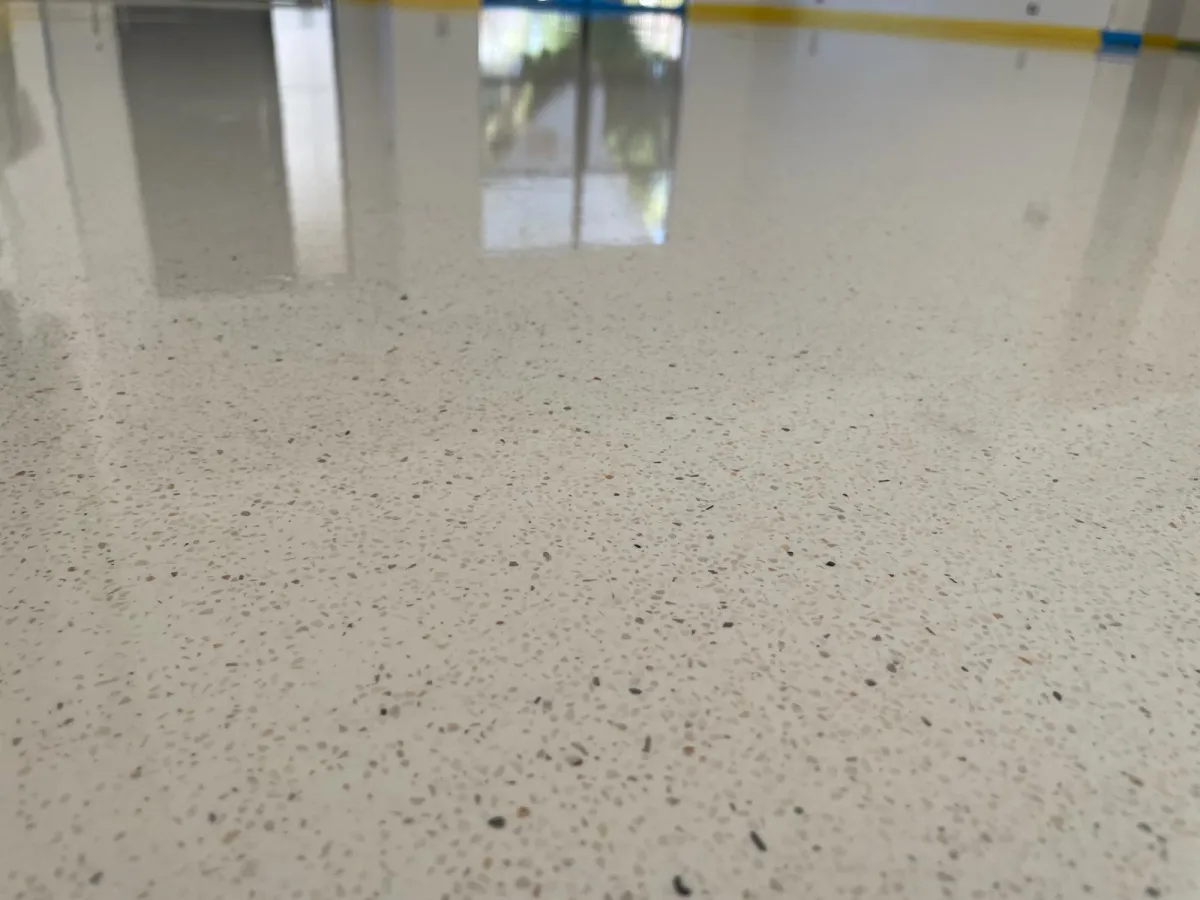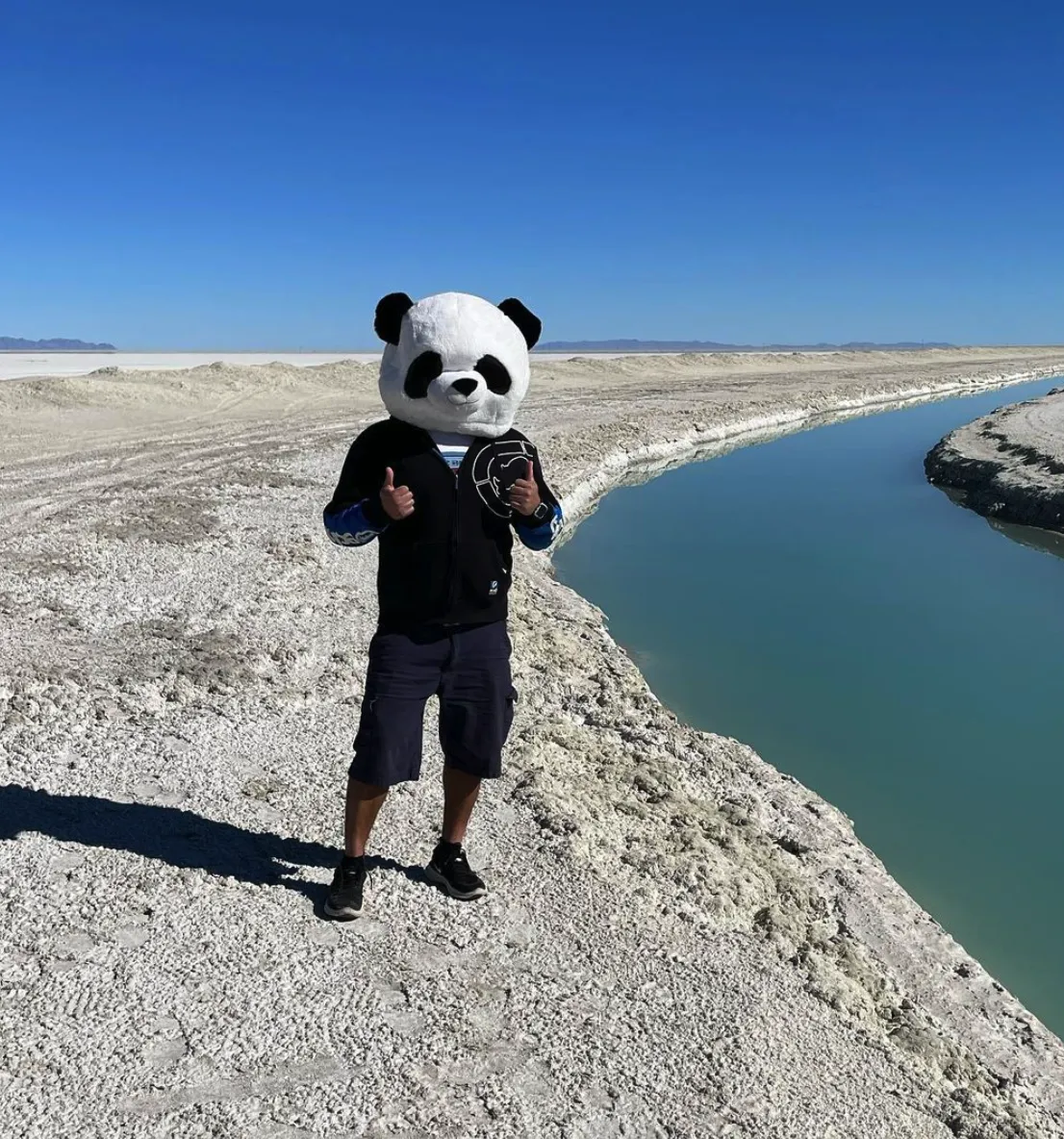
St. George Polished Concrete Care With Specialty Cleaners | Ayala’s Concrete Designs
St. George, Utah, is famous for its stunning red rock vistas, warm desert climate, and a growing community that appreciates natural beauty blended with modern comforts. Among the hottest trends in local architecture and interior design is the rise of polished concrete flooring. The strong southwestern sun streaming through big windows makes polished concrete floors glow with a sleek, reflective sheen that can transform any space into a stylish oasis. But, of course, that southwestern sun can also bring dust, high heat, and other challenges that your polished concrete floors must endure.
Enter Ayala’s Concrete Designs, your neighborhood experts in the art and science of polished concrete. They know the ins and outs of maintaining these gorgeous surfaces in the unique climate of St. George, UT. Ready to dig deep into the best cleaners, the top ingredients to look for, and a routine that’ll keep your polished concrete shining for the long haul? Let’s do it.
Why Polished Concrete Floors Need Specialized Care
Polished concrete floors aren’t just run-of-the-mill slabs with a little bit of gloss. They’re meticulously ground, honed, and polished surfaces that have gone through a multi-step process to achieve that beautiful glow. When you’ve invested in such a floor, it deserves top-of-the-line care. Here’s why specific attention is crucial:
Preservation of the Polish: The finishing process provides that signature mirror-like sheen. Using the wrong products (think vinegar or ammonia) can etch or dull the surface.
Protection Against the Desert Elements: St. George’s desert climate brings in a fair share of dust and grit. If left unchecked, it can scratch the polished layer over time.
Longevity: Well-maintained polished concrete floors can outlast many other flooring options, but only if you use the correct cleaners and reapply protective treatments as needed.
The good news is that a proper cleaning regimen is surprisingly straightforward—so long as you pay attention to the do’s and don’ts we’ll cover.
General Cleaners: What Works & What Doesn’t
Let’s start with the basics. Sometimes you just need an everyday cleaner you can find at your local store, but not all store-bought cleaners are created equal. You want something that’s gentle, effective, and easy to apply.
Neutral pH Floor Cleaners
Recommended: Products like Bona Professional Series Stone, Tile & Laminate Cleaner, Zep Neutral Floor Cleaner, or Simple Green Multi-Surface.
Benefit: These cleaners won’t mess with the pH balance of your polished concrete’s protective seal. Overly acidic or basic solutions can degrade that final finish, making neutral pH options the gold standard for daily or weekly cleaning.
Soft Mop & Water
Benefit: For a quick pick-me-up, a lightly damp mop with plain water can remove dust and light soiling. Distilled water is even better if you’re worried about mineral streaks (a possibility in a high-mineral-content area like St. George).
Diluted Mild Dish Soap
Benefit: Mild dish soaps like Dawn or Palmolive, when heavily diluted, can work in a pinch. Always rinse thoroughly to avoid a film or haze.
Avoid:
Harsh degreasers (with high alkalinity).
Acidic cleansers (like vinegar-based products).
Anything with bleach or ammonia.
Oil-based soaps.
The overarching mantra: when in doubt, go neutral.
Specialized Polished Concrete Cleaners & Conditioners
For a next-level glow and long-term maintenance, specialized cleaners are worth every penny. These are formulated with polished concrete in mind, incorporating gentle surfactants, densifiers, and other beneficial additives:
Concrete-Specific pH Neutral Cleaners
Why They Rock: They’re carefully designed to maintain the protective coating on polished concrete floors. Some even include a small amount of conditioner to keep the floor looking fresh for longer periods.
Densifiers
Core Ingredient: Lithium silicate or sodium silicate.
Function: Reacts with the concrete to create calcium silicate hydrate, filling pores and making the floor harder and more stain-resistant. While densifiers are commonly applied during the initial polishing process, certain maintenance products include a mild dose of densifier to revitalize floors over time.
Conditioning Solutions
Benefit: Sometimes contain an acrylic or polymer component that lightly coats the floor, restoring shine and providing additional protection. These are typically used periodically (e.g., monthly or quarterly) rather than daily.
Polishing Pads
Not exactly a cleaner, but… Using high-grit polishing pads in conjunction with specialized cleaning solutions can burnish the floor to a higher sheen over time. Perfect for floors that see lots of traffic, such as retail spaces or busy homes.
Key Ingredients That Extend Floor Life
We’ve hinted at a few of these already, but let’s list them explicitly so you know what to look for on product labels:
Silicate Densifiers (Lithium or Sodium)
The “heavy lifter” in making concrete floors denser. A denser floor is more resistant to scratches, stains, and general wear.
Low-VOC (Volatile Organic Compounds)
Better for indoor air quality. High-VOC products can be tough on your lungs (and the environment).
Surfactants
The “soapy” components that help remove oils and grime. Gentle surfactants keep the pH balanced and minimize film or streaks.
pH Neutral Formulations
Repeated for emphasis: This is crucial for polished concrete, as it helps maintain that topcoat or guard layer.
Micro-Guard or Hybrid Guard Polymers
Some advanced products include specialized polymers that fill micro-scratches and restore gloss over time.
Maintenance Routine: St. George Edition
A standard routine can go a long way in extending the life and shine of your polished concrete floor. Given the desert conditions in St. George—dust, heat, and dryness—consider these guidelines:
Daily Dust Mopping
Use a microfiber pad to sweep away dust. This prevents dirt particles from accumulating and scratching the surface.
Weekly Wet Mopping
Employ a neutral pH cleaner diluted in water. This frequency may increase if you have heavy foot traffic or if you notice obvious dust buildup.
Monthly Conditioner Application
In high-use areas like kitchens or lobbies, consider a monthly or bi-monthly application of a conditioner or light guard product. This helps maintain gloss and adds a protective layer against everyday wear.
Spot Treatment
For spills or stains (coffee, juice, soda), tackle them immediately with a neutral cleaner. Concrete can absorb liquids quickly, so speed is key!
Periodic Machine Burnishing
If you manage a commercial space or simply love that ultra-glossy look, invest in a machine burnisher or hire a professional. A set schedule (quarterly or biannually) keeps that pristine shine on point.
Addressing Stains & Scratches
No one wants to see a big scratch or an unsightly stain on their polished concrete. But hey, life happens—especially if you’ve got kids, pets, or a busy workspace. Here’s how to handle it:
Scratch Remediation
If scratches are superficial, a high-grit polishing pad (1,500 to 3,000 grit) can often buff them out. For deeper scratches, consult Ayala’s Concrete Designs for professional repair.
Stain Removal
Oil-based stains: Use a poultice or degreaser that’s safe for polished concrete.
Acidic spills (wine, juice): Neutralize quickly with a baking soda solution and then clean with a neutral cleaner.
Regular Inspections
Keep an eye on high-traffic zones—entryways, hallways, and the kitchen. Catching minor damage early prevents bigger issues down the line.
Climate Considerations for St. George, UT
The desert climate can mean large swings in temperature and a lot of fine dust particles. Also, the intense sunlight can accelerate wear on certain floor treatments if they’re not UV-resistant. The dryness can cause expansions and contractions in the concrete substrate—though typically polished concrete is more resilient to these changes than other flooring types.
Pro Tip: If you notice your floor’s surface feels “chalky” in extremely dry conditions, it might be time for a conditioning treatment. Some specialized products contain moisturizing polymers that help maintain the floor’s finish and reduce minor surface dusting.
Green Cleaning & Eco-Friendly Options
Utah’s environment is a treasure, and many St. George residents are keen on eco-friendly solutions. If this is you, look for:
Low- or Zero-VOC Cleaners
They reduce harmful emissions and improve indoor air quality.
Plant-Based Surfactants
Derived from sources like coconut or corn, these can offer gentle cleaning power without toxic additives.
Recyclable Packaging
Some brands go the extra mile by using bottles made from recycled materials.
Remember, “green” doesn’t mean you compromise on cleaning power. Many of these products still maintain a neutral pH balance—perfect for polished concrete.
The Human Factor: Overlooked But Important
Even with the perfect product lineup, your cleaning methods matter. Here are some “human factor” tips to keep in mind:
Use Clean Tools: A dirty mop head just redistributes grime. Wash or replace microfiber pads regularly.
No Soaking: Polished concrete isn’t the same as tile with grout lines. Avoid pooling water; moisture that seeps into the concrete can lead to issues, even if sealed.
Proper Product Dilution: More isn’t always merrier. Over-concentrating your cleaning solution can leave a sticky residue or cause long-term damage.
Timely Spills Cleanup: Especially crucial in desert climates where evaporation can leave behind residues that could stain.
FAQs: Polished Concrete in St. George, UT
Is Polished Concrete Slippery?
It can be if wet, but not necessarily more than other hard surfaces like tile or marble. You can apply slip-resistant treatments if needed.
Do I Need to Wax My Polished Concrete Floor?
Generally, no. Polished concrete is designed to be low-maintenance. Wax can build up and create a hazy appearance. If you crave extra shine, look for a conditioner or guard product specifically made for polished concrete.
Will Furniture Scratches Ruin the Floor?
Furniture can cause scratches if repeatedly dragged across the surface. Use furniture pads or place rugs under frequently moved pieces to prevent damage.
Meet the Pros: Ayala’s Concrete Designs
From installing brand-new polished concrete to refreshing old surfaces, Ayala’s Concrete Designs in St. George, UT, has seen it all. Their expertise ensures that your floor not only looks amazing on day one but continues to dazzle for years to come. Whether you’re dealing with minor scuffs, big stains, or just want a routine maintenance plan, they’re ready to help.
Phone: 435-229-7314
Email: [email protected]
Give them a call or shoot them an email for personalized advice, product recommendations, or a professional polish. They understand the unique needs of St. George’s climate and can tailor a solution that fits your home or business perfectly.
Conclusion: Maintain That Desert Shine
Polished concrete floors embody a perfect blend of durability, style, and eco-friendly living—a harmony that resonates well with the St. George community’s ethos. To keep your floors shining like a desert mirage, remember to:
Stick to pH-neutral or concrete-specific cleaners.
Stay consistent with a dust-mop or vacuum routine.
Address spills and scratches ASAP.
Lean on professionals like Ayala’s Concrete Designs for deeper maintenance tasks.
When done right, these floors can last decades, evolving gracefully with your home or commercial space. So don’t wait—invest the time in proper maintenance, and your polished concrete floors will reward you with that clean, modern style that’s become a signature of Southwest living.


